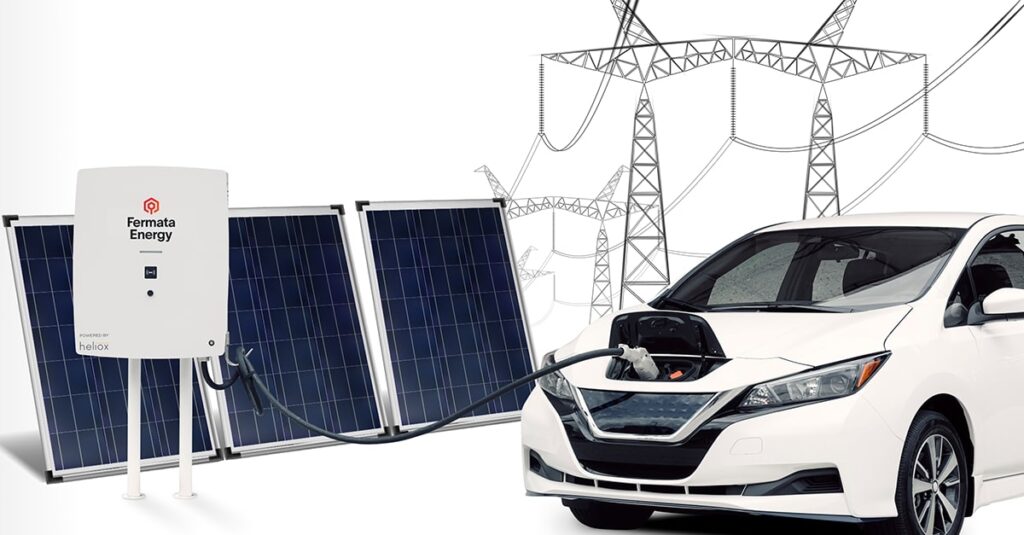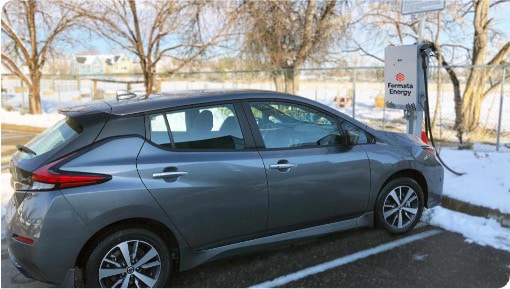Why Bidirectional EV Charging is Key to Driving Grid Flexibility
The transition to a cleaner and more resilient electric grid is gaining momentum, with renewable energy sources like wind and solar playing an increasingly prominent role. However, the inherent variability of these sources—such as cloudy weather affecting solar power or periods of low wind—creates challenges for maintaining grid stability. Electric vehicles (EVs) are emerging as a potential solution to this problem, but it’s important to distinguish between different EV charging technologies when considering their role in supporting the grid.
Two key technologies are often discussed: V1G (managed charging) and Vehicle-to-Grid (V2G) bidirectional charging. V1G refers to the controlled, one-way flow of power from the grid to the EV, allowing for smart, managed charging during specific times. While V1G provides value to the grid by shifting charging to off-peak periods or times when renewable energy is abundant, it can only support the grid when the vehicle is actively charging.
On the other hand, V2G represents a more advanced technology, enabling bidirectional power flow between the EV and the grid. This means that EVs can not only charge from the grid but also discharge energy back into it, offering flexibility and support at all times of day. V2G has the potential to fully unlock the role of EVs in stabilizing the grid by acting as mobile energy storage units, storing renewable energy when it’s plentiful and feeding it back when demand is high or renewable generation is low. This ability makes V2G a key technology for creating a more flexible, resilient energy system that can better accommodate the variability of renewable energy sources.
Managed Charging (V1G) Has Limited Benefits
V1G, or managed charging, is an important initial step in using electric vehicles (EVs) to help manage grid demand. By adjusting the rate of charging based on signals from utilities or grid operators, V1G allows for more dynamic interaction between EVs and the grid. During periods of high demand, utilities can temporarily reduce or pause charging to ease the strain on the grid. During low demand or when there’s a surplus of renewable energy, charging can be increased to take advantage of the excess supply.
While V1G provides valuable flexibility, it comes with limitations. It can only be effective when the vehicle is actively plugged in and charging, which usually happens for just a few hours a day, often during low-demand nighttime periods. Once an EV’s battery is fully charged, the flexibility V1G offers disappears until the vehicle needs to be recharged again. This means that V1G’s ability to contribute to grid stability is confined to the charging window, which may not coincide with times of peak demand. For example, a fully charged EV parked during a hot summer afternoon when electricity demand is highest cannot support the grid unless it’s being charged at that time.
To maximize the benefits of V1G, utilities must implement good rate design and offer managed charging incentives that encourage EV owners to charge during off-peak times or when renewable energy generation from solar and wind is abundant. This can help align charging behavior with grid needs, but the approach is still limited by its dependency on the specific charging periods.
Bidirectional Charging (V2G) Offers the Most Benefits
Bidirectional charging, or Vehicle-to-Grid (V2G), builds upon the capabilities of V1G by allowing power to flow not only into an EV during charging but also out of the EV back to the grid when needed. This turns EVs into dynamic assets, capable of providing energy to the grid during periods of high demand, even if they are not being actively charged at that moment.
With V2G, EVs act as mobile batteries, discharging energy to support the grid during peak times, making them crucial in a renewable energy-dominated grid where supply and demand fluctuate throughout the day. This technology enables EVs to provide valuable services, such as demand response (helping to balance supply and demand), frequency regulation (maintaining the grid’s stability), and even serving as emergency backup power for homes or buildings in case of outages.
The potential of V2G is immense, extending the value of EVs beyond transportation. As the number of EVs on the road increases, their collective battery capacity could become a substantial resource for the grid. For instance, if the U.S. reaches its goal of 50% EV sales by 2030, EVs could collectively provide more than 100 gigawatt-hours of energy storage, a capacity large enough to stabilize the grid during periods of high demand or when renewable energy generation is intermittent. This makes V2G a key technology for creating a flexible, resilient, and sustainable energy system.

EVs Act as Grid Resources
The potential of Vehicle-to-Grid (V2G) technology to provide flexibility and enhance grid stability is already being demonstrated through real-world applications. Across the globe, several pilot programs are proving its effectiveness in balancing grid demand, reducing reliance on costly and polluting peaker plants, and improving energy resilience during power outages. In the U.S., various initiatives in California, New York, and Massachusetts have shown V2G’s capability to lower peak demand and offer backup power solutions.
One notable example is Fermata Energy’s Vehicle-to-Everything (V2X) platform, which has been deployed at over 20 sites across North America. This platform has effectively harnessed the bidirectional charging capabilities of the Nissan LEAF, demonstrating how V2G can provide valuable grid services while generating savings for fleet operators and EV owners alike. These deployments highlight how V2G technology can transform EVs into a critical asset for the grid.
As policymakers, utilities, and consumers explore the role of EVs in supporting the grid, it’s essential to recognize that V2G represents the next evolution in grid flexibility. Fermata Energy is a leader in the V2G space.
Fermata Energy’s Turnkey V2X Solutions
Fermata Energy’s bidirectional charging platform offers cost parity with fast one-way chargers but provides a significant additional benefit: the ability to earn revenue and reduce the total cost of owning an electric vehicle (EV). By turning EV chargers into profit centers, Fermata Energy’s solution helps EV owners and operators generate income while managing energy usage efficiently.
For example, in Boulder, CO, a single EV and bidirectional charger save the city enough on their monthly electricity bills to cover the cost of their EV lease, translating into real, ongoing cost savings of $270.

Additionally, at a municipal wastewater facility, Fermata Energy’s platform, using just one Nissan LEAF and one bidirectional charger, generated more than $12,000 in revenue over three summers. This demonstrates how bidirectional charging can offer substantial financial benefits, turning EVs into valuable assets not just for transportation, but also for reducing energy costs and contributing to grid stability.

Electric Vehicle Marketing Consultant, Writer and Editor. Publisher EVinfo.net.
Services